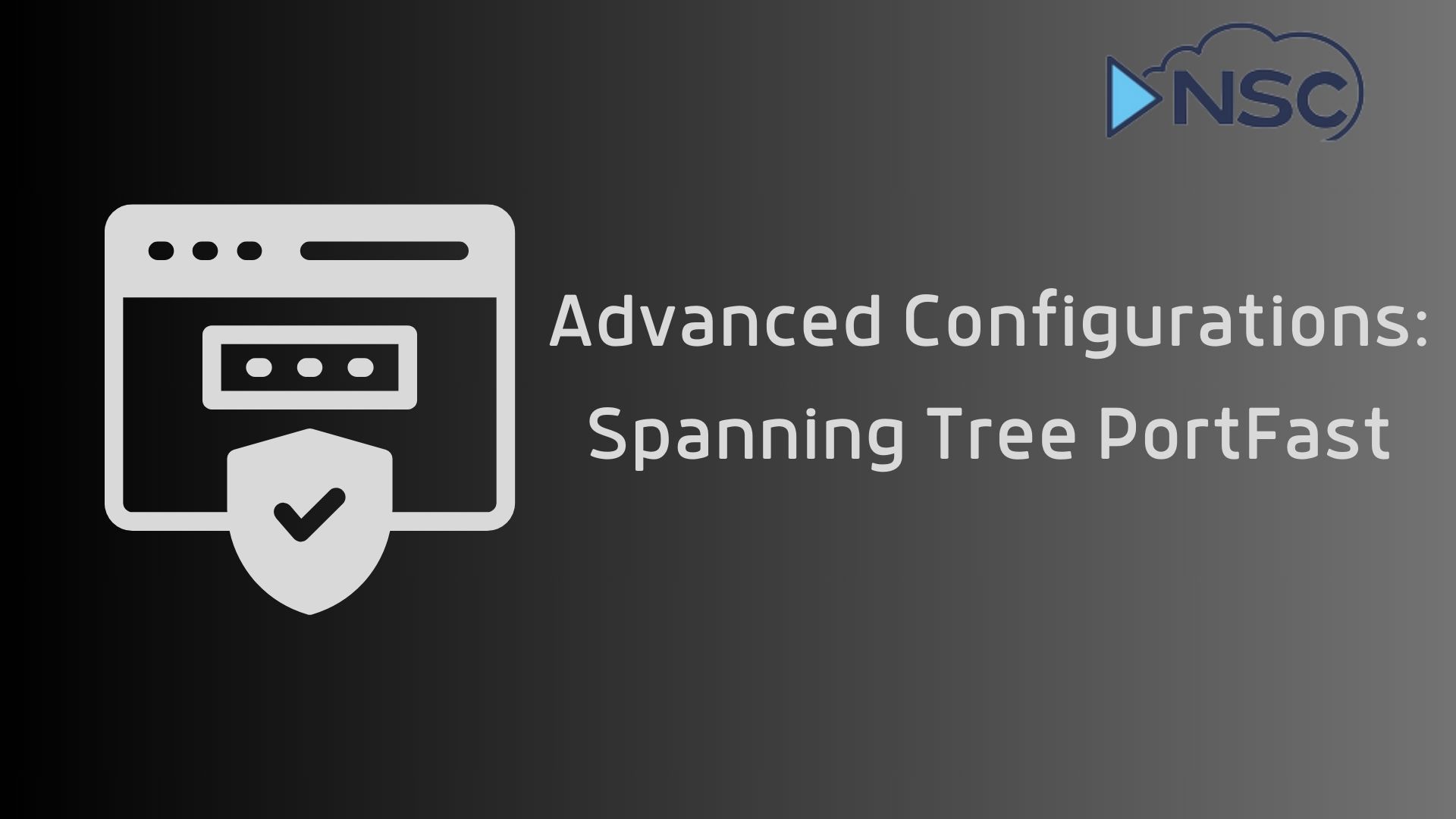Spanning Tree Protocol (STP) plays a crucial role in preventing network loops, with PortFast being a key feature for enhancing network responsiveness.
This setting is especially useful for ports connected directly to end devices, allowing them to bypass the usual listening and learning states and immediately transition to forwarding.
In this blog, we'll explore advanced PortFast configurations, including edge and trunk settings, and the importance of BPDU Guard in maintaining secure and efficient network operations on Cisco devices.
Understanding PortFast
To streamline network startup and enhance performance, enabling Spanning Tree PortFast on your switches can be crucial. Dive into our detailed guide to understand how PortFast bypasses the usual learning and listening states to provide immediate forwarding.
Configuring PortFast on Cisco Devices
Configuring PortFast on Cisco switches is a straightforward process that significantly enhances the network's responsiveness to connected devices. To enable PortFast on an edge port, use the following command in the interface configuration mode:
interface FastEthernet0/1 spanning-tree portfast
This command will apply PortFast directly to the specified port, ensuring that it immediately transitions to the forwarding state upon connection. This configuration is ideal for ports connected to end devices such as computers or servers.
Advanced PortFast Configurations
Edge Port Configuration
For a more detailed setup, specifically on edge ports, the command remains the same, but it's crucial to ensure that these ports are securely configured to prevent unwanted network issues. The spanning tree portfast edge setting ensures that the port rapidly transitions to forwarding state while maintaining the safety of the network topology.
Trunk Port Configuration
Configuring PortFast on trunk ports requires cautious consideration. The command used is slightly different to reflect the nature of the port:
interface GigabitEthernet0/1 spanning-tree portfast trunk
This setting should only be used when the trunk port is connecting to a single end device that requires immediate connectivity. It's crucial not to enable PortFast on trunk ports connecting to other switches.
For network professionals looking to deepen their understanding of Quality of Service configurations which can complement PortFast settings, our IP MPLS Quality of Service course offers extensive insights and practical applications.

BPDU Guard and Its Integration with PortFast
BPDU Guard is a safety mechanism that enhances the functionality of PortFast. It is designed to prevent potential network issues by disabling a PortFast-enabled port if any Bridge Protocol Data Units (BPDUs) are received on that port. BPDUs are messages exchanged between switches to detect loops and manage the spanning tree topology. By implementing BPDU Guard, we ensure that a PortFast-enabled port remains a safe point of connection for end devices and does not inadvertently participate in spanning tree changes.
Implementing BPDU Guard
To activate BPDU Guard on a Cisco switch, you can use the following command within the interface configuration mode, which adds an extra layer of protection to your PortFast-enabled ports:
interface FastEthernet0/1 spanning-tree bpduguard enable
This command should be applied to all ports where PortFast has been enabled, as it ensures that the port will automatically disable itself if it detects any BPDU, effectively preventing potential loop conditions and network disruptions.
Configuring BPDU Guard in conjunction with PortFast is crucial for maintaining network stability and security, especially in environments where end devices are frequently connected and disconnected.
Summary
Implementing advanced configurations like PortFast and BPDU Guard on Cisco devices is pivotal for enhancing network performance and security. PortFast facilitates immediate network access for end devices by skipping traditional STP states, which is crucial in dynamic network environments.
Similarly, BPDU Guard provides a necessary safeguard, ensuring that PortFast-enabled ports do not inadvertently participate in network topology changes, thus preventing potential broadcast storms or network loops.
For network administrators and engineers aiming to enhance their skills, ongoing education and certification are crucial. Our JNCIP-ENT course offers advanced insights into enterprise networking, perfectly complementing the Cisco configuration techniques covered in this blog.
By mastering these technologies and continuously updating their skills, professionals can ensure robust, scalable, and secure networks capable of supporting modern business requirements.


